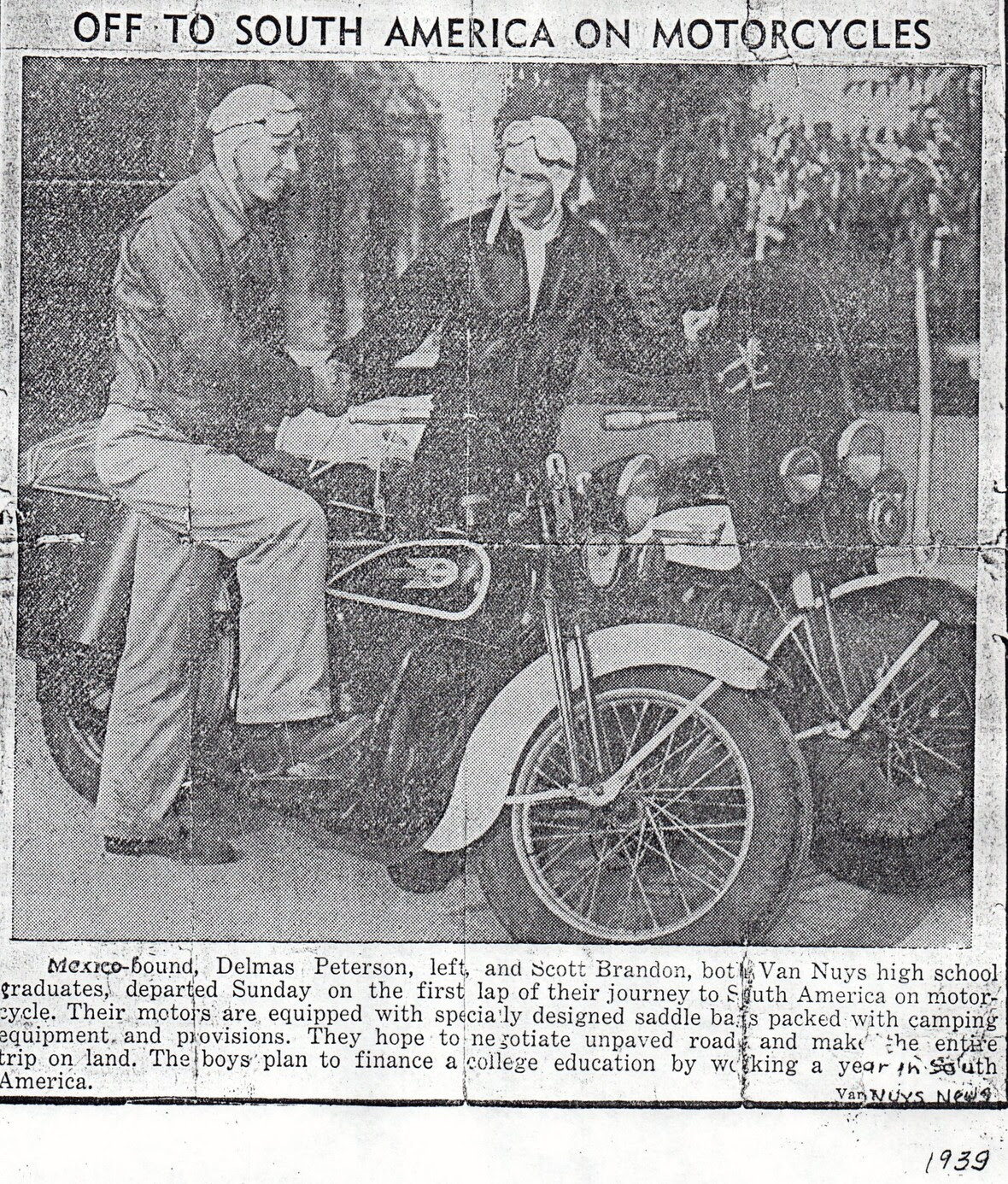
30 Dec Ancestry-Newsletter- December 28, 2024
Contents
- 1 ANCESTRY- MORE OF HENRY CLAY’S EXTENDED FAMILY
- 2 ANCESTRY- PIGKEEPER OR ROYAL HEIR?
- 3 ANCESTRY- WOULD YOU RETURN THIS, IF YOU FOUND IT?
- 4 ANCESTRY- BACK WHEN THEY DIDN’T NEED OZEMPIC
- 5 ANCESTRY- SO, WHAT’S THE REAL STORY- PART III
- 6 ANCESTRY- FIRST LADY JACKIE KENNEDY’S COUSIN
- 7 ANCESTRY- MORE ON DONUTS
- 8 ANCESTRY- THINKING ABOUT GOING OFF THE GRID?
- 9 WHAT ABOUT YOUR DESCENDANTS KNOWING ABOUT YOUR ANCESTRY?
 ANCESTRY- MORE OF HENRY CLAY’S EXTENDED FAMILY
ANCESTRY- MORE OF HENRY CLAY’S EXTENDED FAMILY
William Campbell Preston Breckinridge (1837 – 1904) was a prominent lawyer and Democratic politician from Kentucky. He served as a U.S. Representative from 1885 to 1895. He was part of the esteemed Breckinridge political family, the grandson of Senator John Breckinridge and a first cousin of Vice President and presidential candidate John C. Breckinridge.
Breckinridge graduated from Centre College in 1855 and earned his Juris Doctor from the University of Louisville in 1857. He practiced law in Lexington, Kentucky, where he married Lucretia Clay, Henry Clay’s granddaughter.
William joined the Confederate States Army in 1861 despite his father’s Unionist leanings. He served in the cavalry under John Hunt Morgan and became a colonel in the CSA’s 9th Kentucky Cavalry. He also served as a bodyguard to Jefferson Davis during his flight from Richmond.
After the Civil War, Breckinridge returned to Lexington to resume his legal career, and taught jurisprudence at the University of Kentucky. He was also the editor of the Lexington Observer and Reporter from 1866 to 1868.
He ran unsuccessfully for county attorney in 1869, losing mainly due to his support for allowing African Americans to testify in court. Despite this setback, in 1884, he was elected to the U.S. House of Representatives as a Democrat and re-elected four times, from 1885 to 1895.
In 1893, his long-time mistress Madeleine V. Pollard sued him for breach of promise to marry her, leading to a national scandal. The trial’s revelations of Breckinridge’s infidelity and his weak defense contributed to the end of his political career. He unsuccessfully ran for Congress again in 1896 and later became the chief editorial writer for the Lexington Morning Herald. Ancestry.
Breckinridge was a notable advocate for racial equality. He opposed literacy tests and other means of disenfranchising African Americans. He admired Booker T. Washington and W. E. B. DuBois, recommending their works to his readers. Breckinridge foresaw a future where racial barriers and prejudices would be removed, and class distinctions obliterated. He consistently advocated for repealing restrictions on African American testimony and represented black clients in court cases.
As a U.S. Representative, he supported retaining a black Census Office worker and expressed optimism for improving race relations.
Breckinridge envisioned a society where all races could enjoy common liberty secured by imperial law, believing that the unity of the human race was essential.
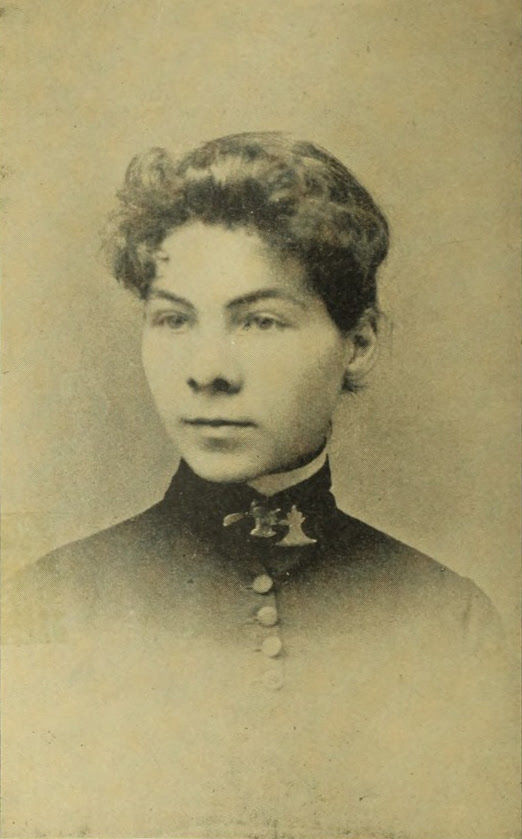

ANCESTRY- PIGKEEPER OR ROYAL HEIR?
Robert Steward (died 1557) was an English cleric who served as the last prior of the Benedictine Ely Abbey in Cambridgeshire and as the first Dean of Ely Cathedral, which replaced it at the Dissolution of the Monasteries.
The History of Parliament biography of one of his relatives’ states that Robert “fabricated a descent from Sir Alexander Stuart, a ferocious offshoot of the Scottish Royal House” (i.e., Alexander Styward/Stewart “The Fierce”). “However, it has been suggested that his real ancestry involved a promotion from the keeping of pigs to the holding of manorial courts” (i.e., the chief function of a steward of a lord of a manor during the feudal era). “A minor gentry family in late medieval Norfolk, their fortune, as well as their pedigree, was made by the time-serving prior, who assigned generous tracts of dean and chapter lands within the Isle of Ely to numerous relatives”.
The surname “Styward” is thus interpreted in some sources as signifying “keeper/warder of the pig sties” and not a corruption of “Stewart”. This “fabricated pedigree” is set out in the Heraldic Visitation of Cambridgeshire, 1575 and shows him 8th in descent from the third son of Alexander Stewart, 4th High Steward of Scotland (died 1283), from whose first son were descended all the Stuart kings of Scotland. Thus, according to the pedigree, he was the 8th cousin of King James V of Scotland (1513-1542), grandfather of King James I of England.
His branch of the Stewart family had been settled in England for seven generations since John Styward (a son of Alexander Styward/Stewart “The Fierce”) had married a member of the Tollemache family of Suffolk. However, the pedigree was declared bogus by “that redoubtable genealogist” Dr Horace Round, who “had great pleasure in refuting … (and) proved beyond that these Stewards were originally pig keepers in Norfolk hence (Sty ward), probably of illegitimate descent and nothing to do with the King’s family”. Ancestry.
Oliver Cromwell was a relative as his mother was Elizabeth Steward, “a daughter of William Steward, of a comfortably-off Norfolk family who farmed Ely’s abbey and cathedral lands. The idea that the Stewards were connected with the royal Stuarts and descended from a Scottish prince shipwrecked on the Norfolk coast in 1406 is a non-starter. The Lord Protector never took it seriously, though he once joked that his mother was a Stuart at a drinking party in Edinburgh in 1651”.
Pictured below are the monument and effigy in Ely Cathedral of Sir Mark Steward (1524-1604), MP, a nephew of Dean Robert Steward. Displays the arms of Stewart, High Stewards of Scotland, and monument and semi-recumbent effigy in Ely Cathedral of Robert Steward (1526/30-1570), another nephew of the Dean who displays the “Steward Augmentation” said to have been awarded to his ancestor Sir Alexander Steward “The Fierce” (a grandson of Alexander Stewart, 4th High Steward of Scotland (died 1283)) by the French King Charles VI (1368-1422).
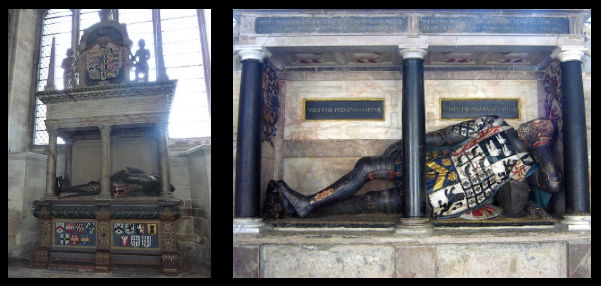
 ANCESTRY- WOULD YOU RETURN THIS, IF YOU FOUND IT?
ANCESTRY- WOULD YOU RETURN THIS, IF YOU FOUND IT?
This is what was written on the opening page of my Great Grandfather’s Civil War Diary:
If I should ever lose this book through carelessness, accident, or otherwise, the finder will have my compliments, respect, and best wishes by returning it to me or placing it within my reach. But if he should act otherwise, I could look upon him as a thief, a rough, a scoundrel, a burglar, a traitor, the names nearest of all my names memory serves me with at present. I hope, gentleman, I will never have reason to disrespect either of you. H.S. Adams.
So, the movies and streaming shows have everyone back in the day throwing “f” bombs left and right; above was the language used by a soldier in 1863 to ward off any interlopers.
My grandfather told me the story of his father (Henry’s son), my great-grandfather Jim Adams, holding a stake while his son (my Uncle Clifford) pounded it with a sledgehammer. The hammer slid off, hit Jim on the thumb, and broke his skin. Jim wrapped it in a cloth, grimacing, and said, “My, that hurt”.
My grandfather told me of another time when he had used a couple of obscenities. Jim told him, “Virgil, you need to improve your vocabulary”. Later, when the horse whisperer became known, we joked that grandpa was the “horse curser”.
 ANCESTRY- BACK WHEN THEY DIDN’T NEED OZEMPIC
ANCESTRY- BACK WHEN THEY DIDN’T NEED OZEMPIC
Bark bread, primarily a Scandinavian tradition, is mentioned in medieval literature and may have older roots among the Sami people, with findings of bark harvests dating back 3000 years. There is a picture showing the drying of the bark at right.
During the 18th and early 19th centuries, Northern Europe experienced crop failures, especially during the Little Ice Age. Creative solutions like bark bread were introduced to stretch flour supplies. In 1742, samples of “emergency bread,” including bark bread, were sent from Kristiansand, Norway, to Copenhagen. During the Napoleonic Wars, moss and lichen were also used for food.
The last time bark bread was used as a famine food in Norway was during the same Napoleonic Wars. The introduction of the potato as a staple crop provided alternatives to grain, making bark bread and moss cakes obsolete. In Northern Sweden, traces of Sami harvesting bark from Scots pine are known from the 1890s, and in Finland, pettuleipä (pinewood-bark bread) was used during the Great Famine of the 1690s, the 1860s famine, and the 1918 civil war.
John Lungren’s story, “When Bread Was Made From Bark,” highlights periods when people ate “starvation bread.” An old man from Sunnerbo Härad, Småland, Sweden, recalled eating bark bread (Bok-bark) in 1826 due to crop failure. A poor man with eight children made bread from Ry-straw and Bok-bark. In 1832, food shortages led people to beg for anything to grind into flour. Reindeer moss was fed to cattle to produce milk.
The last starvation year the man remembered was 1868. Although grain could be bought, food shortages persisted. During this time, the sheriff distributed bark bread to the poor.
In 1869, the man and his family emigrated to Riley County, Kansas, where they enjoyed better food, such as cornbread, pork, barley coffee, milk, and eggs, and thrived with eight big boys in the family.”
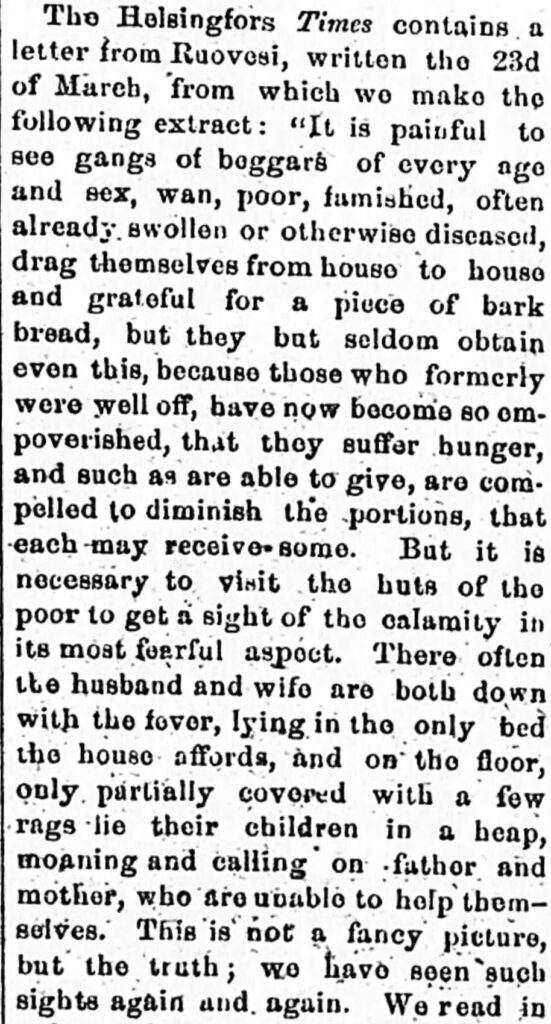
 ANCESTRY- SO, WHAT’S THE REAL STORY- PART III
ANCESTRY- SO, WHAT’S THE REAL STORY- PART III
Here’s the legend:
A client’s Great Grandpa Henry Smith (pictured), at the age of 13, after his parents moved to San Francisco (around 1885), Henry ran away from home and joined the crew of the “Nyanza”, a private yacht owned by George Daar, a Scottish whiskey maker. The yacht was wrecked near Guam, so Henry traveled to Manila and Hong Kong.
When Henry was found on the ship, the captain had him work in the kitchen as a helper. The cook took a liking to him and kept him busy doing odd jobs, like peeling potatoes. Henry worked his way up the kitchen ladder until he was trained to cook. They don’t believe he ever went back to his parents to live; he did visit them when the ship was in dock, where his folks lived. By age 15, he was a quartermaster aboard a ship that shuttled between San Francisco and Panama. By then, he’d been to the Hawaiian Islands, Siberia, and Australia.
Here’s the actual story:
The Nyanza (pictured below) was actually owned by James Cummings Dewar of Dewar’s White Label fame. The Nyanza set sail on July 21, 1887. However, Henry didn’t join the crew until February 1889, when he would have been 17. The “Voyage of the Nyanza,” written by J.C. Dewar, actually documents the voyage, and the ship did visit all of the locations mentioned by Henry, except Australia, which was where it was heading when it met its fate.
The book mentions that in February 1889, a “boy” was brought on in San Francisco. It also contains a list of the crew, with 17 when they left England and all discharged when they reached San Francisco. By the time the ship was scuttled, they had 19. The difference was that they added a Chinese saloon chef in Kobe, Japan, and Henry Smith, a messroom steward, to the crew in San Francisco.
Henry was one of the 7 of the 18 that joined the crew in San Francisco to still be part of the crew by the time the ship was lost on July 29, 1890. Henry sailed with the crew from San Francisco to Vancouver; then to Lahaina, Maui in the Hawaiian Islands; then to the Marianna’s and the Bonin Islands; then Japan, where the ship had extensive repairs; then onto Petropavlovsk, Kamchatka, Russia; then into the Marshall Islands, then the Caroline Islands where in Ponape the ship drifted aground.
Quite an adventure for a 17-year old runaway.
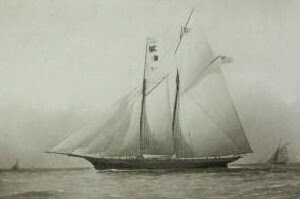
 ANCESTRY- FIRST LADY JACKIE KENNEDY’S COUSIN
ANCESTRY- FIRST LADY JACKIE KENNEDY’S COUSIN
Bouvier Beale (1922 – 1994) was an American lawyer. Beale was one of Edith Ewing Bouvier Beale’s sons and a brother of Edith Bouvier Beale, whose lives were highlighted in the documentary Grey Gardens. Beale was a first cousin of former First Lady Jacqueline Kennedy and Princess Lee Radziwill.
Beale was born in New York City, New York. He was the youngest son of Phelan Beale Sr and his wife Edith Ewing Bouvier Beale (known as “Big Edie”), daughter of his father’s law partner, John Vernou Bouvier Jr. Beale, grew up at Grey Gardens at 3 West End Road in the wealthy Georgica Pond neighborhood in East Hampton on Long Island. To his friends and family, Beale was known as “Buddy.” He attended Westminster School in Simsbury, Connecticut.
Beale followed in the footsteps of his father and grandfather by attending Yale Law School and establishing his own law firm in New York—Walker and Beale (later Walker, Beale, Wainwright and Wolf).
Beale married Katharine Ridgely Jones (pictured) (a distant cousin of my wife), daughter of Mr. and Mrs. Nicholas Ridgely Jones of New York and Glen Cove, New York, at St. John’s Episcopal Church of Lattingtown in 1942. Beale’s ceremony was half over when his mother, Big Edie, arrived, dressed like an opera star.
Beale and his family resided in the historic 1906 Italian Renaissance-styled home Cedarcroft in Glen Cove on Long Island and built their summer home in Bridgehampton, New York, in 1971. Beale spent his weekends and summers on Long Island at the Piping Rock Club, Jones Beach, and Bridgehampton.
Beale was raised a Catholic by his mother but was an atheist and nihilist in his adulthood. Beale believed that Karl Marx “had it right about religion.”
Despite a successful career in law, Beale was best known for actively persuading his mother, Big Edie, and sister, Little Edie, to vacate and sell their Grey Gardens estate in East Hampton. He and his brother Phelan refused to pay for the home’s utilities and upkeep to compel the women to leave the dilapidated mansion.
After the Suffolk County Health Department raided the mansion on October 22, 1971, Sidney Beckwith of the health department contacted Beale to convey his inspection report. Beale responded, “Mr. Beckwith, you’ve described it very well, but it’s nothing new—Mother is the original hippie.” After his first cousins, Jacqueline Kennedy Onassis and Lee Radziwill, came to the aid of Big Edie and Little Edie by having the mansion repaired and cleaned to meet health, sanitation, and building codes, Beale reluctantly paid the back property taxes on the estate.
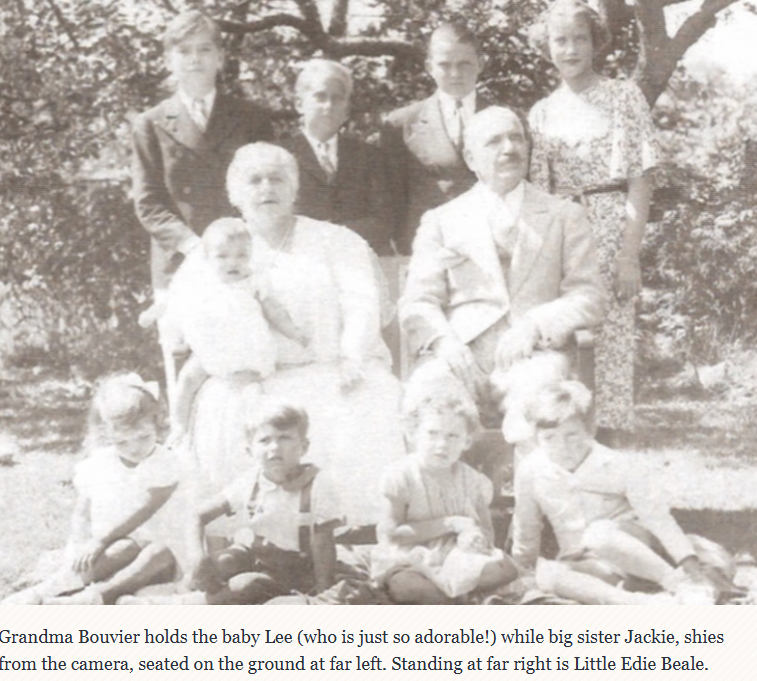
 ANCESTRY- MORE ON DONUTS
ANCESTRY- MORE ON DONUTS
In the last edition, we wrote about my wife’s great-uncle, Stacy Frankin, who invented and sold a donut-making machine. His brother-in-law, my wife’s grandfather Glen Harvey, had a donut shop in suburban southwest Los Angeles in the 1930s, which got them through the Depression.
You can see the location is no longer suburban (pictured).
One of his pleasures in life was always buying a new car every year (pictured), advertising his business.
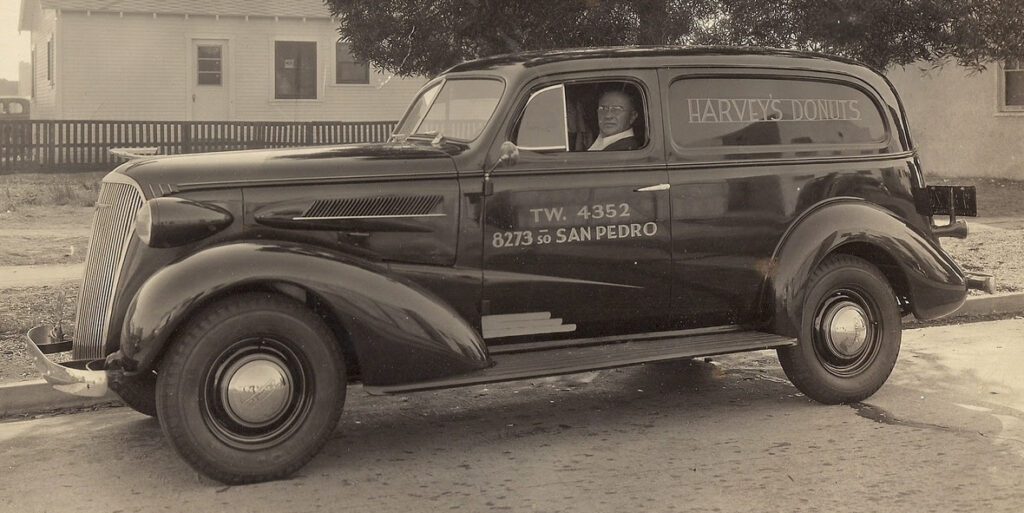

 ANCESTRY- THINKING ABOUT GOING OFF THE GRID?
ANCESTRY- THINKING ABOUT GOING OFF THE GRID?
Finding current records of people is often more challenging than finding records from the last century. Today, we can use search engines or social media and do background checks to find people.
Often, the best source for current information is the client and their family’s knowledge.
One tool we used for searches in the last half of the past century is the “Index to Public Records.” These records come from various public records sources, including telephone directories, marketing lists, postal change-of-address forms, public record filings, directory assistance records, and property and land records. They have been compiled and indexed.
You can erase your past if you have never had a published landline, received an unsolicited email, text, or phone call, received mail and changed addresses, or several other public records.
Of course, then you might have to alter your fingerprints, get new eyeballs, and a full DNA transplant…
 WHAT ABOUT YOUR DESCENDANTS KNOWING ABOUT YOUR ANCESTRY?
WHAT ABOUT YOUR DESCENDANTS KNOWING ABOUT YOUR ANCESTRY?
Yes, that’s Daddy Joe playing dress up with the girls. I am sure he appreciated being captured for posterity.
Reach out to Dancestors Genealogy. Our genealogists will research, discover, and preserve your family history. No one is getting any younger, and stories disappear from memory every year and eventually from our potential ability to find them.
Preserve your legacy and the heritage of your ancestors.
Paper gets thrown in the trash; books survive!
Ready to embark on your family history journey? Don’t hesitate. Call us at 214-914-3598, and let’s get your project started!


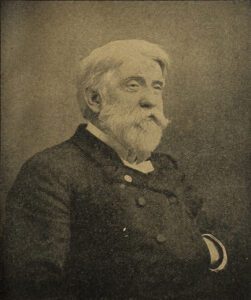 ANCESTRY- MORE OF HENRY CLAY’S EXTENDED FAMILY
ANCESTRY- MORE OF HENRY CLAY’S EXTENDED FAMILY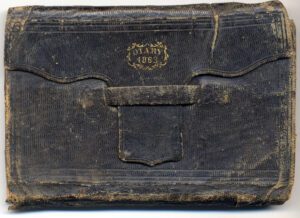 ANCESTRY- WOULD YOU RETURN THIS, IF YOU FOUND IT?
ANCESTRY- WOULD YOU RETURN THIS, IF YOU FOUND IT?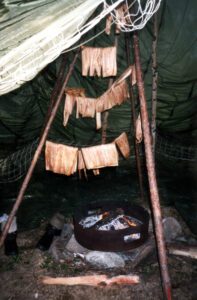 ANCESTRY- BACK WHEN THEY DIDN’T NEED OZEMPIC
ANCESTRY- BACK WHEN THEY DIDN’T NEED OZEMPIC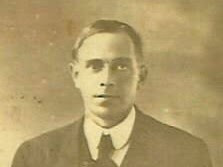 ANCESTRY- SO, WHAT’S THE REAL STORY- PART III
ANCESTRY- SO, WHAT’S THE REAL STORY- PART III ANCESTRY- FIRST LADY JACKIE KENNEDY’S COUSIN
ANCESTRY- FIRST LADY JACKIE KENNEDY’S COUSIN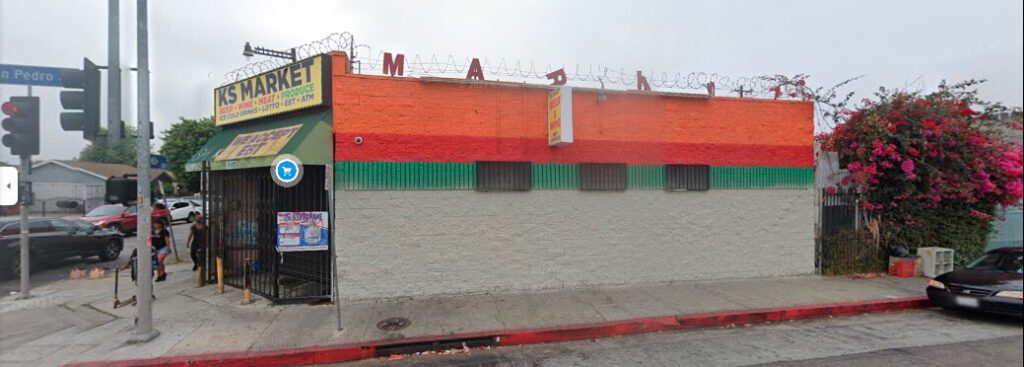 ANCESTRY- MORE ON DONUTS
ANCESTRY- MORE ON DONUTS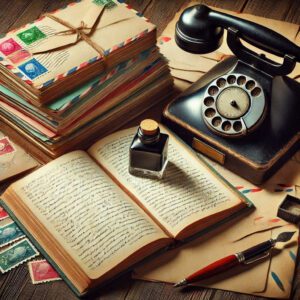 ANCESTRY- THINKING ABOUT GOING OFF THE GRID?
ANCESTRY- THINKING ABOUT GOING OFF THE GRID?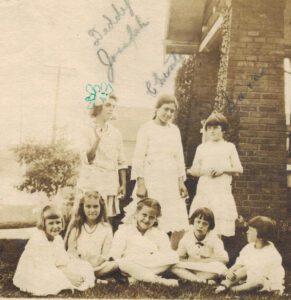 WHAT ABOUT YOUR DESCENDANTS KNOWING ABOUT YOUR ANCESTRY?
WHAT ABOUT YOUR DESCENDANTS KNOWING ABOUT YOUR ANCESTRY?